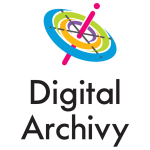Digital Archivists (3 of 3)

.MARAC Panel Part 3 of 3 from presentation on Digital Archivists at MARAC in Newark, Spring 2017
This is the third and final part of a Marac panel presentation examining the differences and similarities between IT professionals and digital archivists. The first two parts focused on similarities and differences. This piece was prepared by David Kay based on his experience working in archives of a variety of different types of institutions.
“Open your arms to change, but don’t let go of your values.” –Dalai Lama
Archival Values
Information is a strategic resource. Every institution creates, uses, stores, revises, and shares it every day, but controlling and managing information effectively requires specialized skills. Without awareness and familiarity with descriptions of records’ primary and secondary values, records cannot be appraised or scheduled for retention or disposition appropriately. Without a digital archivist’s insight and knowledge, a records and archives program will find it difficult to obtain cost reductions, increased efficiencies in search and retrieval, and in the consistent application of retention policies.
Another significant difference between IT professionals and digital archivists, is evident in the way we interact with tools. While IT uses technology as a tool, digital archivists’ toolkit includes an intellectual framework. These include classification systems; descriptive standards; controlled vocabularies; metadata schemas and taxonomies. In fact, integrating these and other archivists’ tools” create great value across the institution.
Archival Tools
There are other archival tools as well. Each of these tools make manifest our intentions, and make technology, people and systems work better. Evidence of this surrounds us as we watch others succumb to information overload and other challenges of digital hoarding. According to a 2014 McKinsey Report for example, “Employees spend 1.8 hours every day—9.3 hours per week, on average, searching and gathering information.” In other words, employees spend one day a week, approximately than 20 percent of their time at work, searching.
“People were created to be loved. Things were created to be used. The reason why the world is in chaos is because things are being loved and people are being used.” – Dalai Lama
Taking disparate perspectives into consideration, digital archivists may lack impressive budgets and resources, staffing, and visibility of IT, but they help implement cost-effective and practical solutions. They also help establish governance, workflow policies and standard operating procedures. More efficient workflows ensure greater buy-in. As stakeholders and owners become aware of information security policies, digital archivists can use knowledge to make change. As a result, they make their digital archives invaluable.
The Value of Archival Knowledge
When confronted with a problem, IT professionals often propose solutions that require purchasing new technology or software. Archivists, on the other hand remain aware of the interplay and interdisciplinary relationships between content, structure and context. The intrepid archivists are also cognizant of the connections between people, technology, and business process This is because, as we saw before, content lives at that intersection.
Professional archivists can help draw solutions from the three elements of knowledge: know-how, know-why, and know-what. In fact we succeed when we are involved in strategy and planning.
Know-why
Know-what
“Learn by Studying”
“Learning by Using”
Conclusion
Although we share similar goals and functions, digital archivists and IT professionals differ in a number of ways. Most particularly, we differ in the size of our budgets, the tools we use, and the language and knowledge we apply. By drawing from our profession’s background and experience, we have an ability to adapt. Si digital archivists remain critical in today’s modern institutions. When we cooperate, coordinate, and compromise we can adapt and offer design thinking, agile workflows, or provide systems thinking. Archivists’ insights make people’s jobs easier and more meaningful. When digital archivists build on our archival values and principles and apply them to an institution’s objectives and mission, they discover solutions better suited for each environment.
Technologies will change, but a digital archivist’s roles and responsibilities will remain as vital as ever. This is especially true if digital archivists can continue to find ways to provide practical, cost-effective solutions. When solutions have impact and serves the needs of multiple departments across an institution, everybody benefits.
Return to Part 1: “How Is a Digital Archivist Different”
Return to Part 2: “MARAC Spring 2018: How Is a Digital Archivist Different”

